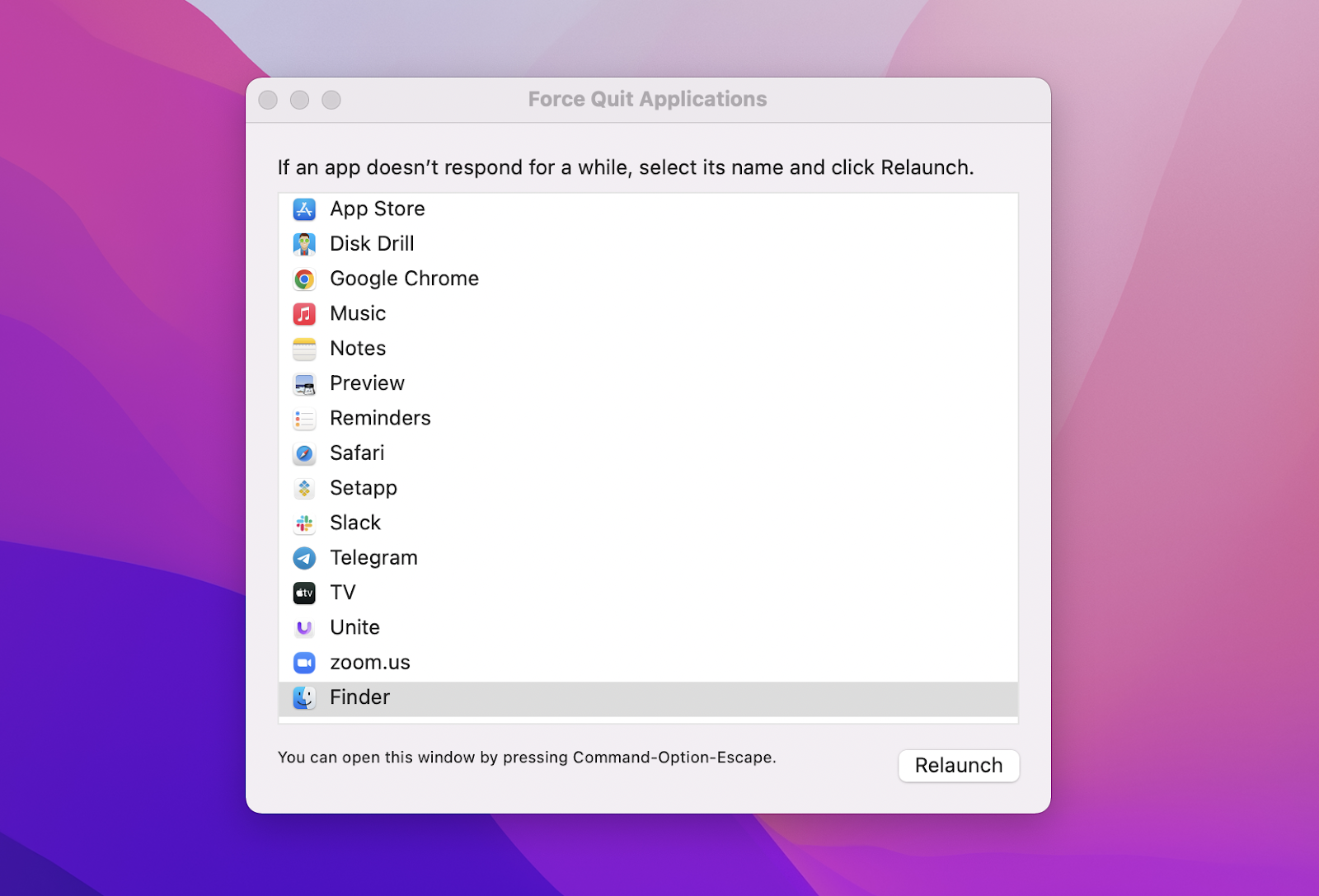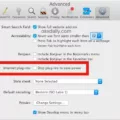The Finder is an essential tool on macOS that allows users to navigate and manage files and folders on their computer. However, there are times when the Finder may become unresponsive or freeze, preventing users from carrying out their tasks effectively. In such situations, it becomes necessary to force quit the Finder to regain control. In this article, we will explore the steps to force quit Finder and reopen it.
Step 1: Access the Force Quit Window
To force quit Finder, you need to access the Force Quit window. There are two ways to do this. The first method is to press three keys together: Option (or Alt), Command, and Esc (Escape). Alternatively, you can choose Force Quit from the Apple menu () located in the corner of your screen.
Step 2: Select Finder and Relaunch
Once the Force Quit window appears, you will see a list of currently running applications. Locate Finder in the list and select it. Then, click on the “Relaunch” button. This action will close the unresponsive Finder and automatically reopen it.
Step 3: Wait for Finder to Relaunch
After clicking on the “Relaunch” button, give the system a few moments to close the Finder and reopen it. You will see the Finder window reappear, and you can continue using it as before.
Additional Tips:
– If you find that the Finder is repeatedly becoming unresponsive, it may be due to a specific file or folder causing the issue. In such cases, try moving the problematic file to a different location or deleting it.
– It’s important to note that force quitting Finder will close all open Finder windows and tabs. So, make sure to save any unsaved work in other applications before proceeding with the force quit process.
– If you prefer using keyboard shortcuts, it’s worth mentioning that the command + q shortcut does not close Finder entirely but instead closes individual tabs. To close all Finder tabs simultaneously, use the command + w shortcut.
Force quitting Finder can be a helpful solution when the application becomes unresponsive or freezes. By following the steps outlined in this article, you can quickly close unresponsive Finder windows and reopen the application, allowing you to resume your file management tasks on macOS.

How Do You Force Quit Finder On Your Mac?
To force quit Finder on your Mac, follow these steps:
1. Press the Option (or Alt), Command, and Esc (Escape) keys simultaneously. This will open the Force Quit Applications window.
2. Alternatively, you can click on the Apple menu located in the corner of your screen and choose “Force Quit” from the dropdown menu.
3. In the Force Quit Applications window, you will see a list of currently running applications. Select “Finder” from the list.
4. Click on the “Relaunch” button to force quit Finder and then automatically relaunch it.
By following these steps, you can effectively force quit Finder if it becomes unresponsive or stops working properly.
How Do You Quit Finder?
To quit Finder, follow these steps:
1. Go to the upper menu bar on your Mac screen.
2. Click on the Apple logo located at the top-left corner of the screen.
3. In the drop-down menu, select “Force Quit…” or “Force Quit Finder…” This option will force the Finder application to close.
4. A new window will appear showing a list of running applications.
5. Locate and select “Finder” from the list of applications.
6. Click on the “Relaunch” button at the bottom-right corner of the window.
7. Finder will now quit and automatically relaunch.
By following these steps, you will be able to quit Finder and relaunch it if needed.
Why Can’t You Quit Finder On Your Mac?
There are a few reasons why you may not be able to quit Finder on your Mac. Here are some possible explanations:
1. Finder is a core component of macOS: Finder is the default file management application on macOS, and it is constantly running in the background to ensure smooth operation of your computer. It is responsible for managing files, folders, and the overall user interface. Due to its critical nature, macOS does not allow you to quit Finder completely.
2. Finder is essential for system functions: Many system functions and features rely on Finder to operate correctly. For example, the desktop, menu bar, and Dock are all part of Finder. Quitting Finder would result in the loss of these essential elements, which would render your Mac unusable.
3. Finder is designed to always be accessible: Apple designed Finder to be readily available at all times, as it is a fundamental tool for navigating and managing files on your Mac. Even if you close all Finder windows, the application itself remains open in the background. This ensures that Finder is easily accessible whenever you need to perform file management tasks.
4. Finder windows can be closed individually: While you cannot quit Finder entirely, you can close individual Finder windows. To do this, simply click on the red “X” button in the top left corner of each Finder window, or use the keyboard shortcut Command + W. This allows you to tidy up your workspace and remove unnecessary windows without quitting Finder itself.
You cannot quit Finder completely on your Mac because it is an integral part of macOS and crucial for system functions. However, you can close individual Finder windows to keep your workspace organized.
Why Won’t Finder Force Quit?
There could be several reasons why Finder won’t force quit. Here are some possible explanations:
1. Unresponsive Applications: If there are unresponsive applications running within Finder, it may prevent Finder from force quitting. In this case, you should try force quitting those applications individually before attempting to force quit Finder.
2. System Processes: Finder is an essential system process, and if it’s busy performing critical tasks or there are other system processes dependent on it, it may not be possible to force quit Finder. You may need to wait for the processes to complete or try restarting your computer.
3. File Operations: If Finder is in the middle of a file operation, such as copying or moving files, force quitting may not be allowed. Ensure that all file operations are complete or canceled before attempting to force quit Finder.
4. Permissions Issues: If you don’t have proper permissions or if there are permission conflicts related to system files or folders, Finder may refuse to force quit. It’s recommended to check and repair disk permissions using Disk Utility.
5. Software Bugs: Occasionally, Finder may experience software bugs or glitches that prevent it from force quitting. In such cases, updating macOS to the latest version or applying relevant software updates may resolve the issue.
6. Hardware or System Issues: If there are underlying hardware or system issues, such as a failing hard drive or corrupted system files, Finder may become unresponsive and not allow force quitting. It’s advisable to run hardware diagnostics and troubleshoot any system issues.
If none of these solutions work, it’s recommended to seek further assistance from Apple Support or consult with a professional technician who can diagnose and resolve the specific issue causing Finder to not force quit.
Conclusion
Force quitting Finder is a simple yet effective way to resolve any unresponsiveness or freezing issues that may occur with the Finder application on your Mac. By pressing the Option (or Alt), Command, and Esc keys together, you can access the Force Quit window, where you can select Finder and click on the “Relaunch” option to restart the application.
This method allows you to quickly close and reopen Finder, ensuring its smooth functioning and resolving any glitches or errors that may have occurred. It is important to note that the Finder is always open, but force quitting it allows you to refresh its processes and regain control over your Mac’s file management system.
Additionally, it is worth mentioning that the command + q shortcut does not work for closing the entire Finder window. Instead, you need to use the command + w shortcut to close each tab individually. However, force quitting Finder is a more efficient solution when encountering significant issues or unresponsiveness.
By following these steps, you can easily troubleshoot any problems with Finder and continue using your Mac with ease.








